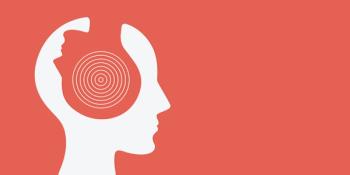
Rethinking Countertransference in the Age of COVID-19
It’s not supposed to happen this way, but when dread pours over and out in this new dark night of the soul, I’m just thankful for anything that makes it stop.
CORONAVIRUS CHRONICLES
Series Editor: H. Steven Moffic, MD
“As far as we can discern, the sole purpose of human existence is to kindle a light in the darkness of mere being.”
Carl Jung
I flip my phone on, as I tell my patients not to do when
The phone lights up: 2:45. That’s really early, even for me. The Facebook icon shows its red circle with a number in it and I tap it even though I’m not supposed to. A GIF pops open: a teddy bear with a throbbing heart, arms akimbo, bouncing up and down with pink stars. It’s raining rainbows, throwing kisses. I smile deeply to myself and eventually go back to sleep.
It’s not supposed to happen this way, but when dread pours over and out in this new dark night of the soul, I’m just thankful for anything that makes it stop. But, and there is always a but, I am a mental health professional, a psychotherapist and a psychiatric nurse practitioner and I’m not supposed to be getting teddy bears in the middle of the night from people who once were my patients. Even though we all may be isolated, eyes are wide open in our collective insomnia.
Workers in other professions-teachers, financial planners, bartenders, regular medical providers-get to stay in touch with their clients, students, patients. They can become friends if simpatico, if there’s a connection. But we mental health warriors, once we have said goodbye, it’s supposed to be over. Enduring connection is assumed but never tested. “Termination” is a vital part of the therapeutic process; it is supposed to teach our patients how to end things with positive resolution. How to grieve and celebrate simultaneously, which sounds either a little Zen-koanish or too much like an Internet meme. Either way, it creates a different definition of community. We guard our hearts as well as our cell-phone numbers and email accounts. Our pool of contacts is sparser than others, leaving us perhaps with fewer options for connection in these quarantined times.
In my own therapies the termination process was never smooth. When I was living in a foreign country at age nineteen and trying to negotiate college, an
Other terminations were messy and inadequate, and taught me all I needed to know about being a therapist myself.
Decades later, I may have broken a few tiny rules in my own practice. I once accepted a Facebook friend not recalling she had been a patient. After working with a loving family who suffered terrible medical losses, they contacted me years later. We had lunch, and now make it a regular event when I’m in my hometown. When I closed my practice and moved to another state I stayed in touch with a patient for whom complete termination would have been unkind.
Most don’t even want to stay in touch so it’s not the issue we were trained to think it is. Sometimes when we run into old patients, they thank us for saving their lives, ask for a pre-COVID-19 hug, and they go on their way, as do we, the day a little brighter for having done some good in the world.
Am I not supposed to appreciate the innocent reminders that I was a bridge to something better along the way, maybe to sobriety or to staying alive until the meds kicked in? Or as one young woman wrote, sending me a picture of her healthy family, “They wouldn’t be here if not for you.” If I were a construction worker and someone sent me a picture of their solid, lived-in home, “Still standing,” that would be OK, right?
I’m at the end of my career, teetering in that awkward phase that Erikson calls Integrity vs Despair, or that we might rename now as “Am I going to die alone sharing a respirator vs where’s the light at the end of this tunnel?” Do I get to enjoy the periodic and often perfectly timed messages reminding me of connection and value? Should I set a boundary when a man, now my age, messages me to remind me that “Right now, in this moment, everything is OK” as I did with him decades ago when his defeats were overwhelming? His gratitude is as therapeutic to me as it is to him. As if there are not enough boundaries right now, two arms lengths separating us from the rest of us.
In the COVID-19 world there are new rules. I now see patients over the computer. They see my living room-I see their bedrooms. They hear my dog whining-I see their bathrobes. And in the collective unrest and dread, I cannot argue with the comfort of, regardless of who sent it, a bedazzled teddy bear in the middle of the night.
Disclosures:
Nina Gaby is a writer, visual artist, and advanced practice nurse who specializes in addiction and psychiatry. She has been working with words, clay, and people for 5 decades. Her essays, fiction, prose poetry, and articles have been published in numerous anthologies, journals, and magazines, and her artwork is held in various collections, including the Renwick Gallery of the Smithsonian, Arizona State University, and Rochester Institute of Technology. She maintains a clinical practice in Vermont and has been on faculty at the University of Rochester, John Fisher College, and Norwich University. She reports no conflicts of interest concerning the subject matter of this article.
Newsletter
Receive trusted psychiatric news, expert analysis, and clinical insights — subscribe today to support your practice and your patients.














